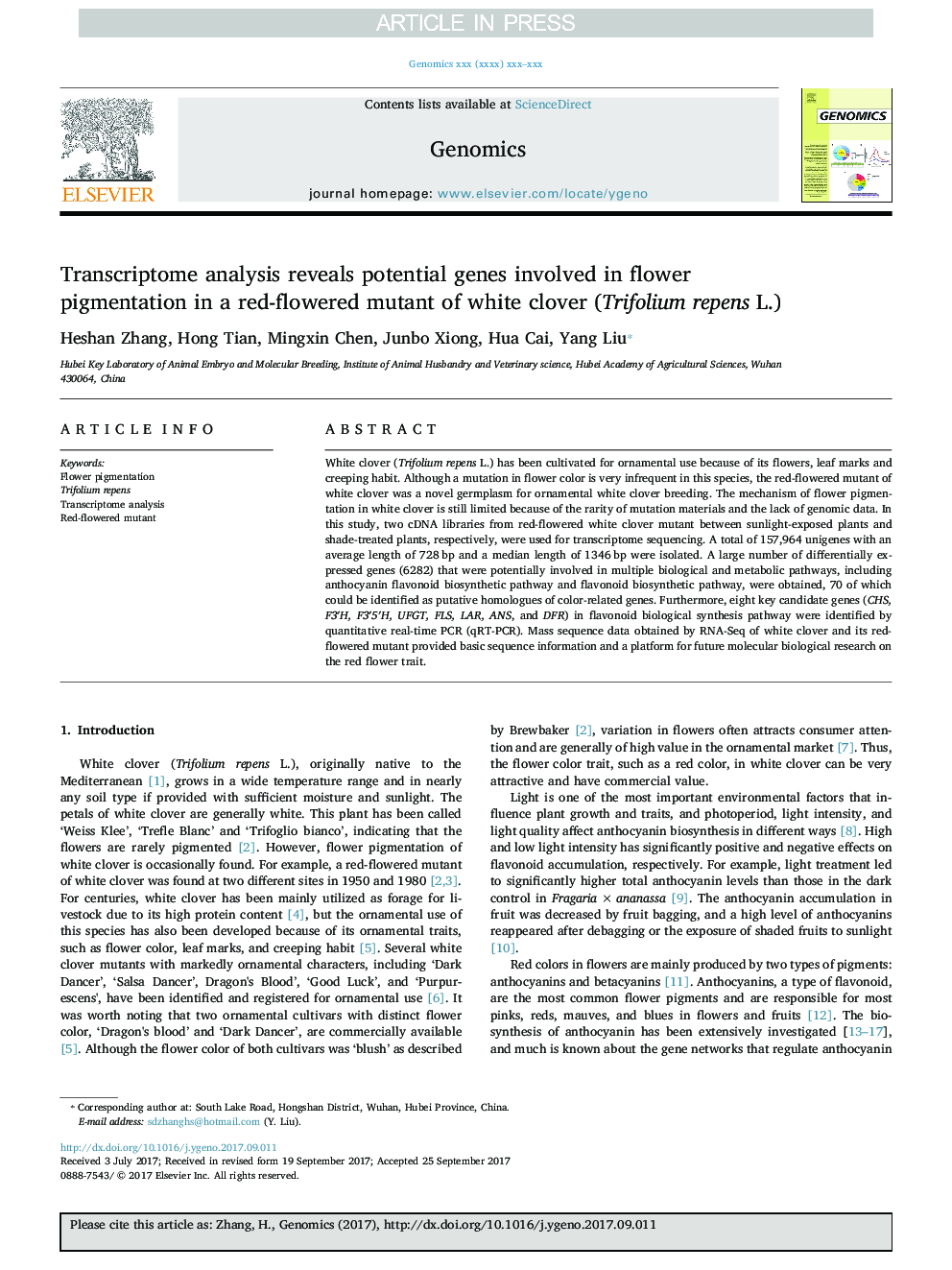| Article ID | Journal | Published Year | Pages | File Type |
|---|---|---|---|---|
| 8646326 | Genomics | 2018 | 10 Pages |
Abstract
White clover (Trifolium repens L.) has been cultivated for ornamental use because of its flowers, leaf marks and creeping habit. Although a mutation in flower color is very infrequent in this species, the red-flowered mutant of white clover was a novel germplasm for ornamental white clover breeding. The mechanism of flower pigmentation in white clover is still limited because of the rarity of mutation materials and the lack of genomic data. In this study, two cDNA libraries from red-flowered white clover mutant between sunlight-exposed plants and shade-treated plants, respectively, were used for transcriptome sequencing. A total of 157,964 unigenes with an average length of 728Â bp and a median length of 1346Â bp were isolated. A large number of differentially expressed genes (6282) that were potentially involved in multiple biological and metabolic pathways, including anthocyanin flavonoid biosynthetic pathway and flavonoid biosynthetic pathway, were obtained, 70 of which could be identified as putative homologues of color-related genes. Furthermore, eight key candidate genes (CHS, F3â²H, F3â²5â²H, UFGT, FLS, LAR, ANS, and DFR) in flavonoid biological synthesis pathway were identified by quantitative real-time PCR (qRT-PCR). Mass sequence data obtained by RNA-Seq of white clover and its red-flowered mutant provided basic sequence information and a platform for future molecular biological research on the red flower trait.
Related Topics
Life Sciences
Biochemistry, Genetics and Molecular Biology
Genetics
Authors
Heshan Zhang, Hong Tian, Mingxin Chen, Junbo Xiong, Hua Cai, Yang Liu,
